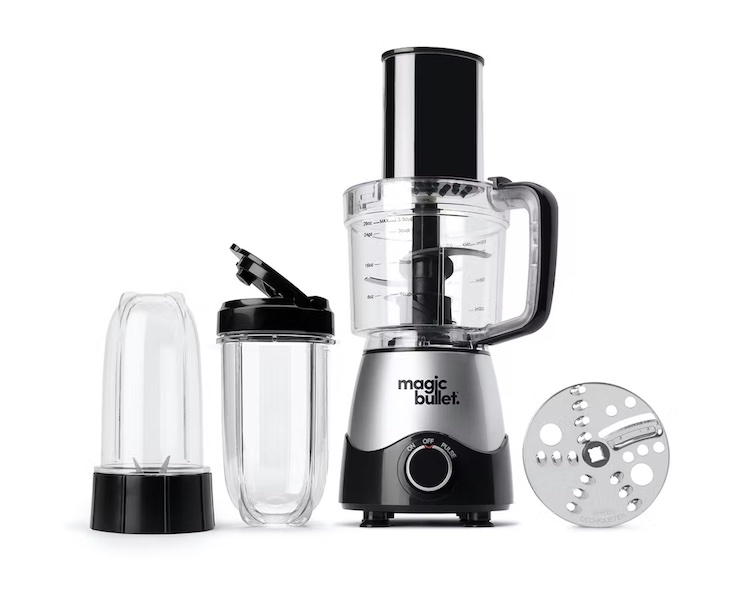Hummus is a delicious and nutritious dip or spread made from chickpeas, tahini, and a variety of seasonings. It is a popular choice for vegan and vegetarian diets, as well as for those looking to add more plant-based protein to their meals. Making hummus at home allows you to customize the flavors and ingredients to your liking, and it can be a cost-effective alternative to store-bought options.
One convenient tool for making hummus at home is a Nutribullet, a high-speed blender designed for smoothies and other blended recipes. In this article, we will discuss the benefits of making hummus in a Nutribullet, as well as provide a step-by-step guide for doing so at home. We will also offer tips for customizing and serving your homemade hummus, so you can enjoy this tasty and healthy treat anytime.
Table of Contents
Benefits of Making Hummus in a Nutribullet
There are several benefits to making hummus at home, and using a Nutribullet can make the process even easier and more convenient. Here are some of the benefits of making hummus in a Nutribullet:
- Customization: When you make hummus at home, you have complete control over the ingredients and flavors. You can choose to use chickpeas, lentils, or a combination of both as the base, and you can add in any seasonings or flavorings you like. This allows you to create a hummus that is tailored to your personal preferences.
- Cost-effective: Homemade hummus is generally less expensive than store-bought options, especially if you buy your ingredients in bulk. Using a Nutribullet to make your hummus is also more cost-effective than using a food processor, as it is a smaller and more compact appliance.
- Convenient: A Nutribullet is a small and convenient appliance that is easy to use and store. It is also much faster than using a food processor or blender to make hummus, as it can blend ingredients in just a few seconds.
- Healthy: Homemade hummus is generally healthier than store-bought options, as it allows you to control the ingredients and reduce the use of preservatives and additives. Using a Nutribullet to make your hummus also allows you to retain more of the nutrients in the ingredients, as it blends them at a high speed without overheating.

Ingredients for Homemade Hummus
To make homemade hummus in a Nutribullet, you will need the following ingredients:
- 1 cup cooked chickpeas (or 1 can, drained and rinsed)
- 2-3 tablespoons tahini
- 2-3 tablespoons lemon juice
- 2 cloves garlic, minced
- 1/2 teaspoon salt
- 1/4 teaspoon ground cumin
- 2-4 tablespoons water (or more as needed)
- Optional ingredients: olive oil, paprika, chopped herbs (such as parsley or cilantro), roasted red peppers, roasted pine nuts, or other seasonings or flavorings to taste
You will also need a Nutribullet or other high-speed blender, as well as a container or bowl for serving the hummus.
Note: You can adjust the quantities of the ingredients to your liking, depending on your preferred flavor and consistency. You can also experiment with different types of beans or legumes, such as lentils or black beans, as the base for your hummus.
Step-by-Step Guide to Making Hummus in a Nutribullet
Making hummus in a Nutribullet is a quick and easy process that yields a smooth and creamy dip or spread. Follow these steps to make your own homemade hummus in a Nutribullet:
- Gather your ingredients: You will need 1 cup cooked chickpeas (or 1 can, drained and rinsed), 2-3 tablespoons tahini, 2-3 tablespoons lemon juice, 2 cloves garlic, minced, 1/2 teaspoon salt, 1/4 teaspoon ground cumin, and 2-4 tablespoons water (or more as needed). Optional ingredients may include olive oil, paprika, chopped herbs (such as parsley or cilantro), roasted red peppers, roasted pine nuts, or other seasonings or flavorings to taste.
- Add the ingredients to the Nutribullet: Place the chickpeas, tahini, lemon juice, garlic, salt, cumin, and water in the blender cup of your Nutribullet.
- Blend the ingredients: Secure the lid on the Nutribullet and blend the ingredients on high speed until smooth and creamy, scraping down the sides of the cup as needed. If the hummus is too thick, add a little more water or oil to thin it out. If it is too thin, add a little more tahini or chickpeas to thicken it up.
- Adjust the seasonings and flavors: Taste the hummus and adjust the seasonings and flavors as desired. You may want to add more salt, cumin, lemon juice, or other flavorings to taste.
- Serve and store: Serve the hummus immediately, or transfer it to a container with a tight-fitting lid and store it in the refrigerator until ready to serve. Homemade hummus will keep in the refrigerator for up to a week.
Enjoy your homemade hummus as a dip for vegetables or pita chips, or as a spread on sandwiches or wraps. You can also customize the flavors and ingredients to your liking, using different types of beans or legumes, herbs, spices, and flavorings to create a unique and delicious hummus that is all your own.
Tips for Customizing and Serving Your Homemade Hummus
- Experiment with different beans or legumes: While chickpeas are the most common base for hummus, you can also use lentils, black beans, or other beans or legumes to create a unique flavor and texture.
- Add herbs and spices: Mix up the flavor of your hummus by adding fresh or dried herbs, such as parsley, cilantro, or basil, or by incorporating spices such as cumin, coriander, or chili powder.
- Customize the consistency: If your hummus is too thick, add a little more water or oil to thin it out. If it is too thin, add a little more tahini or beans to thicken it up.
- Serve with a variety of dippers: Hummus is a versatile dip that goes well with a variety of dippers, such as pita chips, crackers, sliced vegetables, or toasted bread.
- Garnish with toppings: Dress up your hummus by garnishing it with a drizzle of olive oil, a sprinkle of paprika, or a handful of chopped herbs or nuts.
- Store in the refrigerator: Homemade hummus will keep in the refrigerator for up to a week. You can also freeze it in an airtight container for up to three months, though it may lose some of its texture upon thawing.
By following these tips, you can customize and serve your homemade hummus in a variety of ways, making it a tasty and convenient snack or addition to any meal.
See also:

Hi, I’m Jen from New Mexico. I have been working from home as a graphic designer for a long time. While working at home, I realized that I enjoy spending time in the kitchen. The kitchen is my biggest hobby. I set up this site to relay the products and experiences I’ve tried. I review many kitchen equipment and share them with you!
